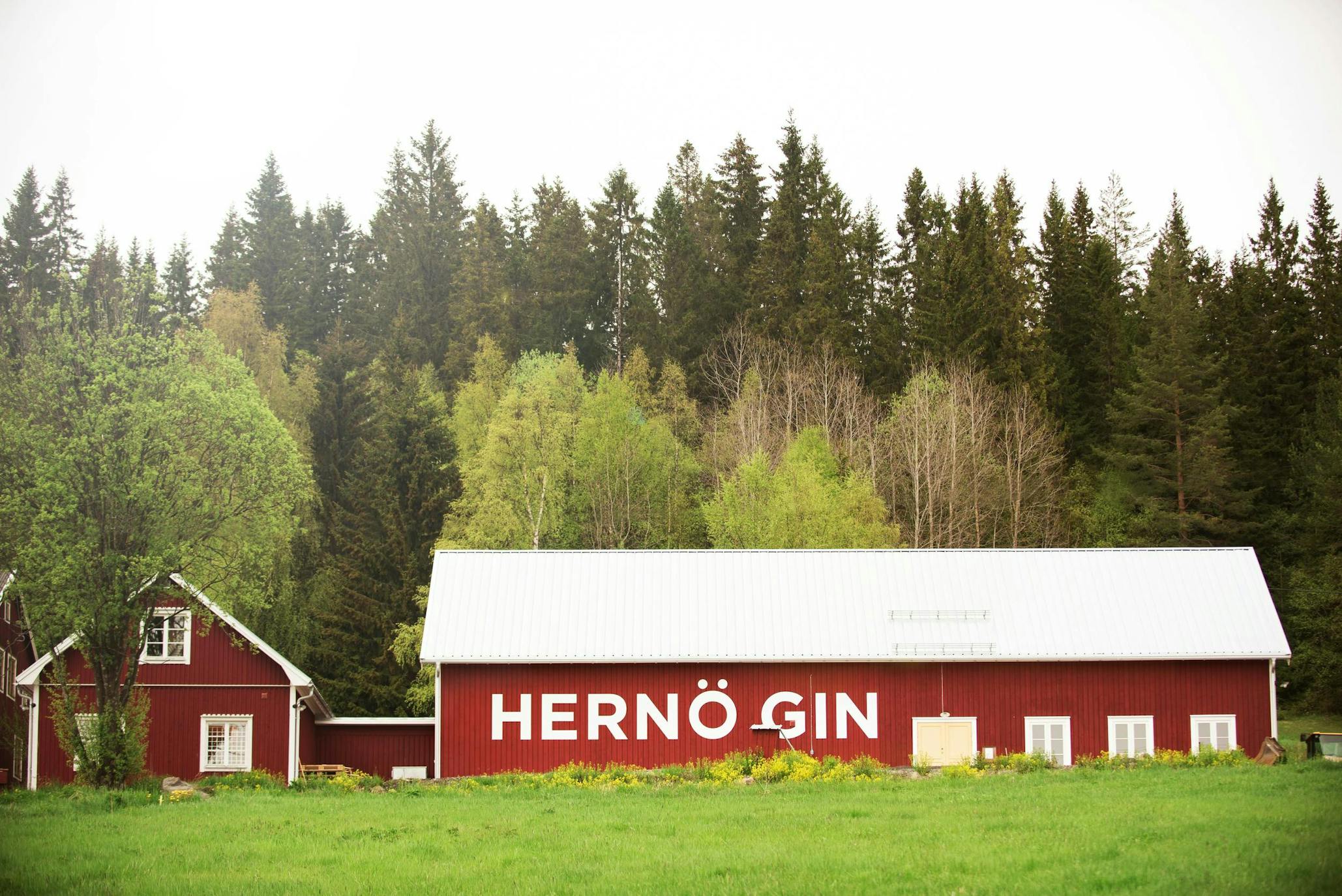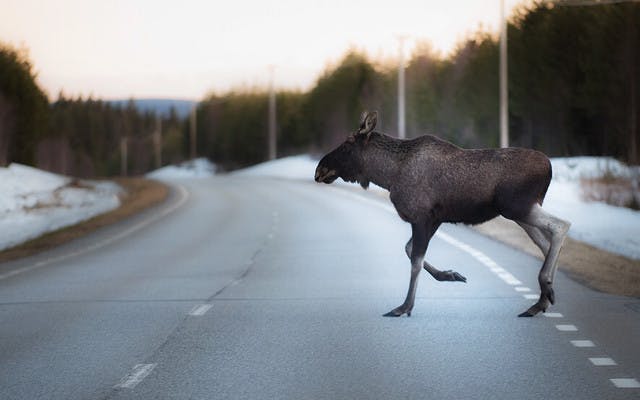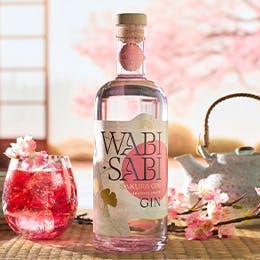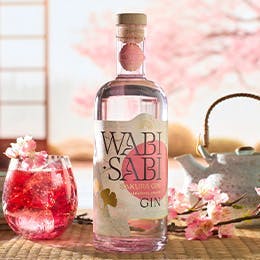Total flexibility, no commitment
A world of unique, crafted gins
Easy, free and reliable delivery

Swedish Spirit: The man behind Europe's most awarded gin
Our July Gin of the Month from Hernö Gin can lay claim to being the most awarded gin in Europe. We meet the dedicated distiller behind this beautiful spirit.
What do you think of when you think of Sweden? Snowy landscapes? Eurovision winners? Ikea?
One thing you might not think of is gin. That, dear reader, is about to change forever. For Sweden is home not only to gin, but to a gin that can boast more awards than any other in Europe: Hernö Gin.
For Jon Hillgren, founder and head distiller of Hernö Gin, the road to Swedish Excellence (as his signature gin is dubbed) didn’t start in Sweden, but in the UK. In 1999, aged 19 and having just finished secondary school, Jon travelled to London with a group of friends, where he found himself working as a bartender. It was here that he first got to know the joys of juniper. At that point, it wasn’t yet, as he says, quite “the gin era”, but the green shoots of what were to blossom into the modern gin renaissance were just starting to show, in the form of pioneering brands such as Hendrick’s and Martin Miller’s.
Jon, wisely, seized the opportunity to taste as many gins as possible during his six month stay in London, before heading back to Sweden to attend university. He emerged with a Master’s degree in political science and for the next ten years worked in the Swedish government, focusing on trade and foreign affairs.
Throughout this whole time, however, gin was never far from Jon’s mind. As his own interest grew and evolved, so too did the craft gin movement in Europe. As more and more new gins appeared, Jon’s gin dreams began to take on a more definite shape: his own distillery. Determined to transform himself into a real distiller, he visited as many existing distilleries as he could, read avidly and returned to London to undertake a course at the Institute of Brewing and Distilling.
But while London had once again provided the scene for Jon’s gin education, he had no doubts about where he wanted to begin making his gin: “It was Sweden all the time,” he says. While the nation might never have been in doubt, though, it took some time to find exactly the right spot to set up shop.
HOME SWEDE HOME
Following a short period working in Saudi Arabia, Jon returned to Härnösand, the city where he was born. “When I lived in the city,” he explains, “I didn’t have a site that I really liked. There were what used to be industrial sites, but I wanted something that would show the Swedish heritage more than just a brick building.”
The answer came when, in 2011, Jon and his young family moved out of the city to a house they had bought in the village of Dala, around 10km away. Located in a UNESCO world heritage area called The High Coast, the region is remote, beautiful – and very Swedish. “Very soon after we moved there,” Jon says “I decided this would be a good location for the distillery.”
And so Hernö Gin Distillery was established and construction began on the actual buildings (designed along traditional Swedish lines) in spring of 2012. Production was up and running by the end of that year – making this both the first (and to date still only) dedicated gin distillery in Sweden and the most northerly gin distillery in the world.
When it came to the gin itself, Jon had already developed a profile of it in his head. “But of course I knew,” he explains, “that there’s a difference between a thought of the flavour profile and the actual flavour profile you get from a still – because every still, every water and every process is unique.”
It took around three and a half months of experimentation with his new still, a 250 litre Holstein named Kiersten, for Jon to hit on the right recipe. “I wanted a very fresh, juniper-driven gin with a clear lemon profile and a floral profile,” he tells us. One of the first ingredients he turned to was lemon peel; the distillery buys fresh organic lemons, which are still peeled by hand every day to capture a true citrus freshness.

When it comes to the floral profile, Jon tells us, “I’ve always been a fan of meadowsweet which, as you can hear from the name, is sweet but also very floral. It works very well with the coriander and the lemon.”
The third important element that Jon wanted was a recognisably Swedish profile – and that’s where the lingonberries come in. “Many people [outside Sweden] might not know what lingonberries are, but we ask them if they have ever been to IKEA and if they ate meatballs – then everyone knows,” Jon laughs. Completing the botanical make-up are cassia, vanilla and black pepper. “Those are not the predominant tastes, of course,” Jon explains, “but they are there supporting, in the background.”
ORGANIC ORIGINS
One very important thing for Jon about all the ingredients in Hernö Gin – from the botanicals to the wheat that he uses to distil his alcohol – is the fact that they are all organic. From the very beginning, he explains, he knew he wanted to make an organic London Dry Gin.
The commitment to only using organic produce can sometimes create problems. “Of course it’s a challenge to get organic lemons every day of the year, being 500km north of Stockholm,” Jon explains. “We have just three stores where we can get them and they don’t have them every day during lemon off-season – so yeah, it’s a challenge.”
But for him, it’s a challenge that is well worth taking on, not only in order to uphold his own principles – “taking care of our planet and the environment” – but also to make the gin as good as it can be. “Of course it costs extra, but it also adds flavour – especially when buying fresh lemons,” he says. “If you compare a conventional lemon and an organic lemon, just smell them and you’ll know the difference.”
Another key factor in shaping the gin is the location of the distillery. “We are making a Swedish product,” Jon emphasises. “We are using botanicals from all over the world, but it is distilled in the northern part of Sweden.”
This has an impact in two particularly important ways – firstly, in terms of the water used to make the gin. “We have, if not the cleanest water in the world, then very, very close to that,” Jon says, “which means we don’t need to do anything to it, we just use it. Which of course affects the alcohol very much.”
Secondly, the dramatic seasonal differences in this part of Sweden play their part. “In the winter we have minus 30°C and a metre of snow,” Jon tells me. “In the summer, well, we have quite a good summer, we have 27°C plus.” These fluctuations have an impact on the maturation of Jon’s products, inflecting them with another layer of peculiarly Swedish identity.
To make his gin, Jon first distils organic wheat to create what is essentially a vodka (albeit one that is not for drinking – the business is strictly gin here). Once the spirit is prepared, the juniper and coriander seeds are hot-macerated in it for 18 hours before the other six botanicals are added. From the grain distillation to the final botanical infusion, it takes just over 24 hours to make one batch.
AWARDS APLENTY
When the first batch of gin rolled off the production line at the end of 2012, Jon was thinking he would be happy to run the still twice a week and dreamed of, perhaps one day, winning any of the ‘high value’ industry medals available for gin. But as it turned out, things were to go a little better than that.
Almost as soon as production began, in order to keep up with demand, he was having to run the still “five, six, seven times a week”, Jon says, “so of course we were very happy!”. Not only that, but very soon the awards began flowing in – not just for Hernö’s signature Swedish Excellence Gin, but also for its Navy Strength, Old Tom and Juniper Cask gins – all of which were part of Jon’s plan from the start, but which were released at carefully timed intervals.
Since 2013, the first full year that the distillery was running, Hernö has landed more than 25 international Master and Gold Medals, including bagging the Boutique Distillery of the Year and Contemporary Gin trophies at last year’s International Wine and Spirits Competition (IWSC), along with two further Gold Outstanding awards.
This impressive roster of titles makes Hernö officially the most awarded gin in Europe, something about which Jon is rightly proud, but also characteristically modest. When I ask him how he feels about having gathered all these awards he smiles, saying: “Yes, I’m quite happy with what happened in the past few years.”
The result of this success is, of course, a huge and continuing increase in demand, something that the distillery responded to with an expansion in 2015, including the purchase of a new 1000 litre still. Named Marit, it is an exact replica of the original Kiersten, only bigger.
Jon has been working full-time at the distillery since a few weeks after it opened, and his parents, Yvonne and Leif, now aged 66 and 70, share a full-time role helping out with hand-corking and labelling. Jon’s twin sister Elin handles the Swedish market, and Jon has recently hired Johan to look after events and marketing, as well as being responsible for the distillery’s visitor’s centre.
This visitor’s centre has also proved a big hit, with five or six groups of between 12 and 50 people coming each week to take part in gin masterclasses, which are held in front of Marit, the big still.
When it comes to the future, Jon plans simply to continue to do what he does best: make exceptional gin. He also hopes to increase the market for his products in Europe and beyond.
For now, he intends to stick with his four core gin products (as well as the Sloe Gin that is now available in the UK), but he will always continue to experiment with different recipes. As he says, “Having a distillery 10 metres from where I live – it is of course very fun to make new gin products.” Almost as fun, perhaps, as it will be for us tasting them.







